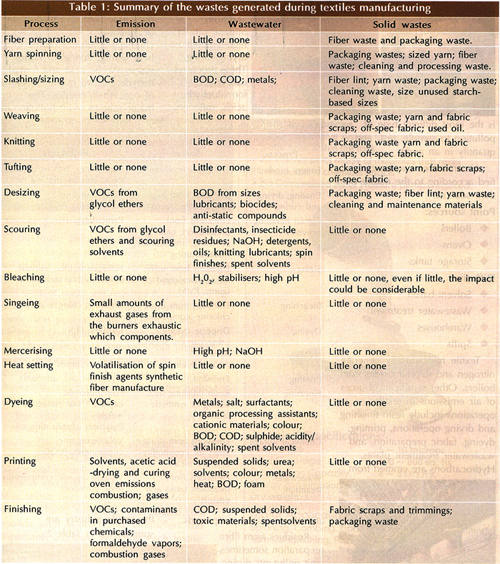The textile industry involves many stages in the production of textile. The table below from the Indian Textile Journal shows a summary of the emissions from various textile processes.

Air pollution:
- Textile facilities generate nitrogen and sulfur oxides through boilers
- Hydrocarbons are emitted from drying ovens
- Bleaching releases chlorine and chlorine dioxide into the atmosphere
A more detailed list of process and air pollution is stated in the table below

- High volumes of water used in textile processes, up to 200 litres of water is used of 1 kilogram of textile
- 20% of global freshwater pollution is made by textile production
- Wastewater is not treated after production, resulting in toxic chemicals to be disposed in water bodies. This chemicals include PBDEs, phtalates, organochlorides and lead, which can cause severe health issues
Land pollution
- According to Textile Exchange, 5% of all landfill space is taken up by textile waste
- Land used for textile plantations tend to be useless and barren in the long run due to pesticides and fertilizers
A more detailed list of solid pollution can be seen in the table below
